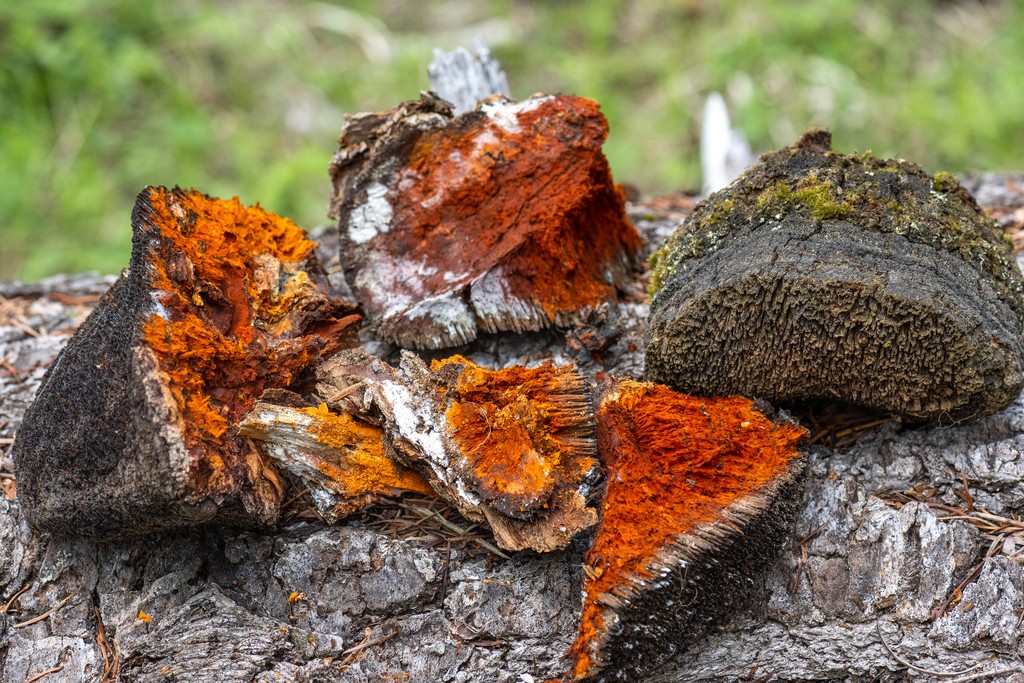Echinodontium
Scientific name: Echinodontium
Echinodontium
Scientific name: Echinodontium
 Photo By alan_rockefeller , used under CC-BY-4.0 /Cropped and compressed from original
Photo By alan_rockefeller , used under CC-BY-4.0 /Cropped and compressed from original Description
Echinodontium is a fascinating group of fungi known for their distinctive tooth-like spines, which grow on the undersides of their caps. Members of this group typically inhabit dead or dying trees, often contributing to wood decay. They are primarily found in temperate forests and can play a crucial role in nutrient cycling within their ecosystems.
Species of Echinodontium
Scientific Classification
Phylum
Club fungi Class
Mushroom-forming fungi Order
Russulales Family
Echinodontiaceae Genus
Echinodontium